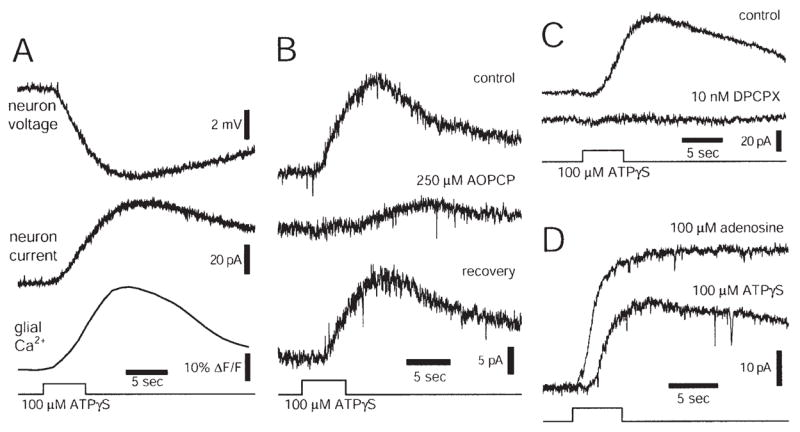Fig. 4.

Glial release of ATP inhibits rat ganglion cells. A: Ejection of ATPγS onto the retinal surface evokes a Ca2+ increase in glial cells and a hyperpolarization (current-clamp recording) and an outward current (voltage-clamp recording) in a neighboring ganglion cell. B: Stimulation of glial cells with ATPγS evokes an inhibitory outward current in a ganglion cell. Addition of AOPCP, an ectonucleotidase inhibitor that blocks conversion of AMP to adenosine, reduces and slows the time course of the current. The effect is largely reversible. C: Addition of DPCPX, an A1 adenosine receptor antagonist, abolishes the outward neuronal current evoked by ATPγS stimulation of glial cells. D: Adenosine ejection evokes a larger, shorter latency current in a neuron than does ATPγS ejection at the same retinal location. Reproduced from Newman (2003).
